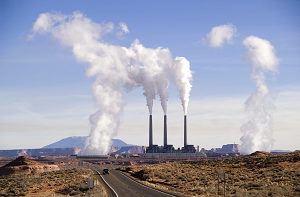Friday, 19/12/2025 | 23:39 GMT+7
Global datacenters account for more carbon emissions than the airline industry, and about 10% of worldwide energy use. Unfortunately, as in many other parts of the economy, the financial incentives to reduce waste currently don’t line up with the ecological ones. The capital wealth, revenue and profits being generated by rapidly growing computing services far outpace the cost of energy to make them happen.

There was an article in the January edition of Water Energy & Environment with several intelligent insights into this problem, for example:
Because storage is perceived as cheap, many people believe it is easier to store everything they may need in the cloud, versus putting thought into what is actually useful and likely to be needed.
Even with sophisticated virtualization technology in wide use, server CPU utilization hovers below 10% on average, meaning 90% of CPU capacity is idle.
As we access apps via smartphones the back-end processing they initiate consumes 70 times more power than the devices themselves – each smartphone is responsible for as much energy consumption as a modern refrigerator!
The root of the problem (argues the article) is that application architects have no idea how much power each application uses, let alone incentives to consider reducing power consumption. Some of these same observations were highlighted in an excellent 2014 NRDC report that also makes the point about aligning IT incentives with power conservation objectives.
I’d argue that the best way to conserve datacenter energy is to question the simplistic assumption that “cheap commodity servers” and scaling horizontally as necessary is the solution to every problem. You can cut sever count substantially by choosing higher density solutions. For our clients, deploying a single Solace appliance allows them to retire (or not buy in the first place) 10 to 50 servers running software-based messaging (the specific ratio depends on the use case and software they’re using).
The energy footprint of a Solace appliance is approximately the same as a single server, so the energy saving is 90-98% across the messaging estate – with better performance, higher reliability and lower cost (you don’t have to buy those 50 servers). Some of our largest customers have more than 10,000 servers primarily doing messaging, so the power and monetary savings can really add up. This one change doesn’t solve the runaway datacenter sprawl problem by itself, but it’s a step in the right direction.
Anh Tuan








 Webinar 2: “Financial Support for Energy Efficiency Enterprises – Opportunities and Challenges”
Webinar 2: “Financial Support for Energy Efficiency Enterprises – Opportunities and Challenges”
 Vietnamese enterprises achieve green growth and cut costs through energy efficiency
Vietnamese enterprises achieve green growth and cut costs through energy efficiency
 Capacity Building for Program Implementing Entity
Capacity Building for Program Implementing Entity
 Enhance Energy Efficiency Knowledge for Managers of Cement Industrial Enterprises
Enhance Energy Efficiency Knowledge for Managers of Cement Industrial Enterprises
 Promoting Energy Efficiency for Technical Staff of Brick and Ceramic Sector
Promoting Energy Efficiency for Technical Staff of Brick and Ceramic Sector
 Capacity building for participating financial institutions of the VSUEE Project
Capacity building for participating financial institutions of the VSUEE Project
 Capacity building for participating financial institutions in Ho Chi Minh City
Capacity building for participating financial institutions in Ho Chi Minh City